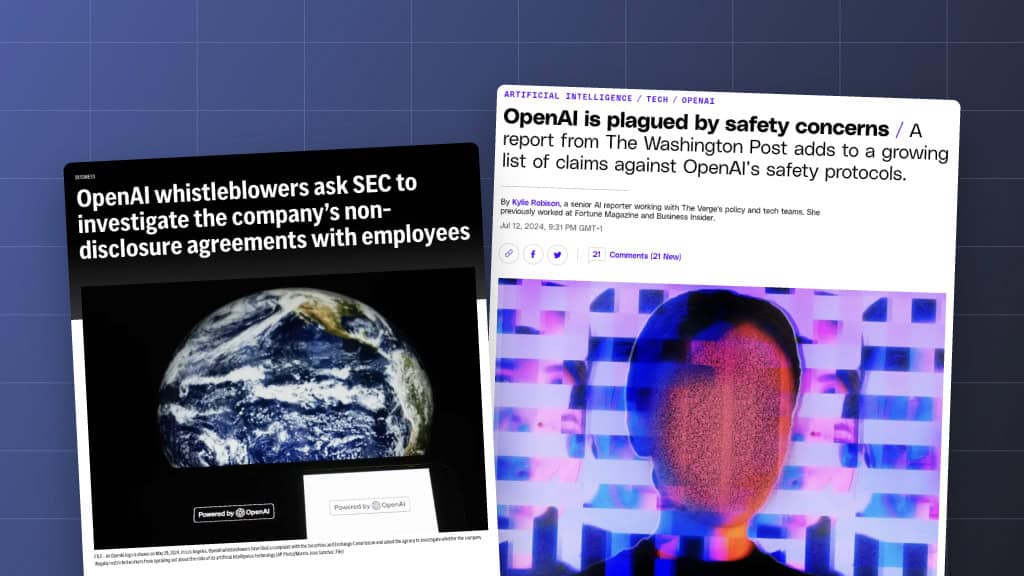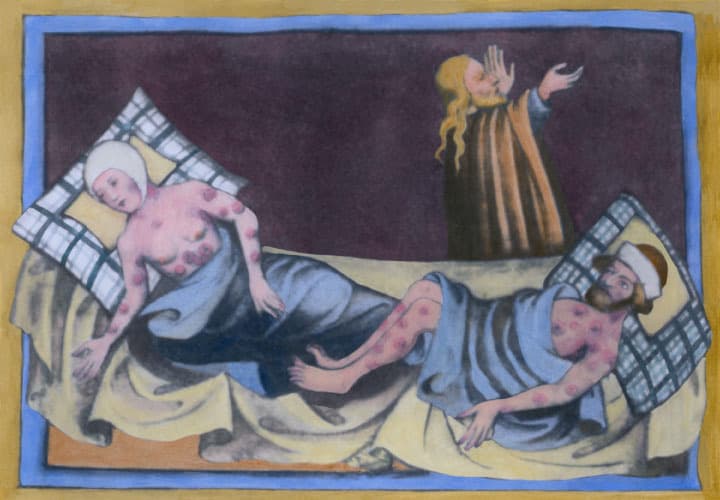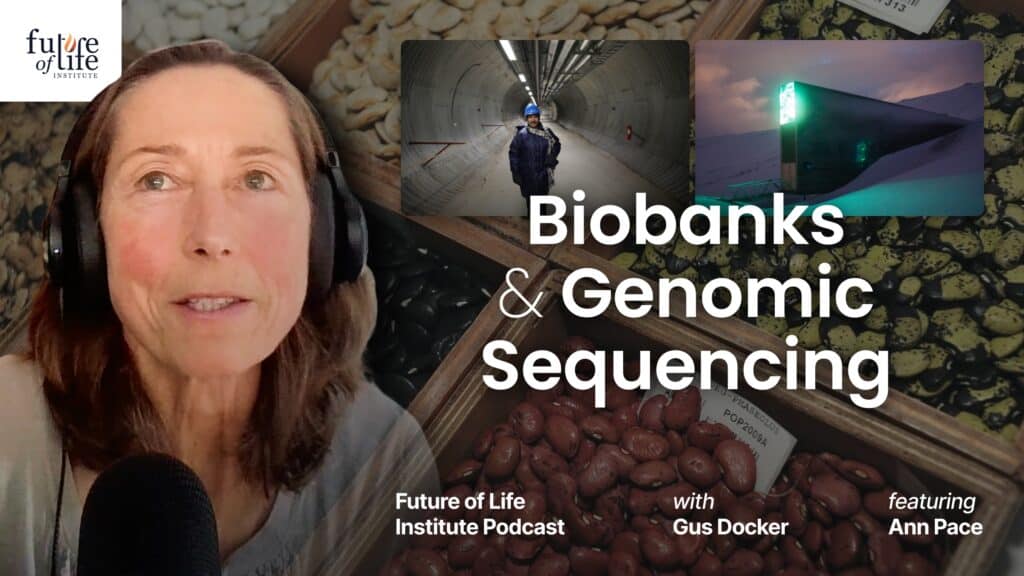Genome Editing and the Future of Biowarfare: A Conversation with Dr. Piers Millett
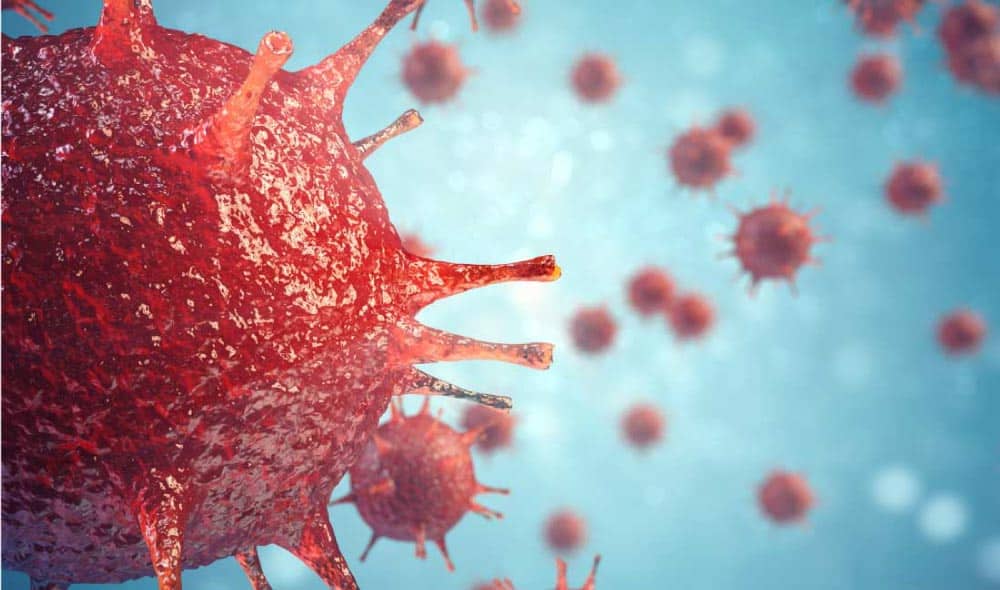
Contents
In both 2016 and 2017, genome editing made it into the annual Worldwide Threat Assessment of the US Intelligence Community. (Update: it was also listed in the 2022 Threat Assessment.) One of biotechnology’s most promising modern developments, it is now consistently deemed a danger to US national security. All of which raises the question: what, exactly, is genome editing, and what can it do?
Most simply, the phrase “genome editing” represents tools and techniques that biotechnologists use to edit the genome – that is, the DNA or RNA of plants, animals, and bacteria. Though the earliest versions of genome editing technology have existed for decades, the introduction of CRISPR in 2013 “brought major improvements to the speed, cost, accuracy, and efficiency of genome editing.”
CRISPR, or Clustered Regularly Interspersed Short Palindromic Repeats, is actually an ancient mechanism used by bacteria to remove viruses from their DNA. In the lab, researchers have discovered they can replicate this process by creating a synthetic RNA strand that matches a target DNA sequence in an organism’s genome. The RNA strand, known as a “guide RNA,” is attached to an enzyme that can cut DNA. After the guide RNA locates the targeted DNA sequence, the enzyme cuts the genome at this location. DNA can then be removed, and new DNA can be added. CRISPR has quickly become a powerful tool for editing genomes, with research taking place in a broad range of plants and animals, including humans.
A significant percentage of genome editing research focuses on eliminating genetic diseases. However, with tools like CRISPR, it also becomes possible to alter a pathogen’s DNA to make it more virulent and more contagious. Other potential uses include the creation of “‘killer mosquitos,’ plagues that wipe out staple crops, or even a virus that snips at people’s DNA.”
But does genome editing really deserve a spot among the ranks of global threats like nuclear weapons and cyber hacking? To many members of the scientific community, its inclusion felt like an overreaction. Among them was Dr. Piers Millett, a science policy and international security expert whose work focuses on biotechnology and biowarfare.
Millett wasn’t surprised that biotechnology in general made it into these reports: what he didn’t expect was for one specific tool, genome editing, to be called out. In his words: “I would personally be much more comfortable if it had been a broader sentiment to say ‘Hey, there’s a whole bunch of emerging biotechnologies that could destabilize our traditional risk equation in this space, and we need to be careful with that.’ …But calling out specifically genome editing, I still don’t fully understand any rationale behind it.”
This doesn’t mean, however, that the misuse of genome editing is not cause for concern. Even proper use of the technology often involves the genetic engineering of biological pathogens, research that could very easily be weaponized. Says Millett, “If you’re deliberately trying to create a pathogen that is deadly, spreads easily, and that we don’t have appropriate public health measures to mitigate, then that thing you create is amongst the most dangerous things on the planet.”
Biowarfare Before Genome Editing
Developments such as CRISPR present new possibilities for biowarfare, but biological weapons caused concern long before the advent of gene editing. The first recorded use of biological pathogens in warfare dates back to 600 BC, when Solon, an Athenian statesman, poisoned enemy water supplies during the siege of Krissa. Many centuries later, during the 1346 AD siege of Caffa, the Mongol army catapulted plague-infested corpses into the city, which is thought to have contributed to the 14th century Black Death pandemic that wiped out up to two thirds of Europe’s population.
Though biological weapons were internationally banned by the 1925 Geneva Convention, state biowarfare programs continued and in many cases expanded during World War II and the Cold War. In 1972, as evidence of these violations mounted, 103 nations signed a treaty known as the Biological Weapons Convention (BWC). The treaty bans the creation of biological arsenals and outlaws offensive biological research, though defensive research is permissible. Each year, signatories are required to submit certain information about their biological research programs to the United Nations, and violations reported to the UN Security Council may result in an inspection.
But inspections can be vetoed by the permanent members of the Security Council, and there are no firm guidelines for enforcement. On top of this, the line that separates permissible defensive biological research from its offensive counterpart is murky and remains a subject of controversy. And though the actual numbers remain unknown, pathologist Dr. Riedel asserts that “the number of state-sponsored programs has increased significantly during the last 30 years.”
Dual Use Research
So biological warfare remains a threat, and it’s one that genome editing technology could hypothetically escalate. Genome editing falls into a category of research and technology that’s known as “dual-use” – that is, it has the potential both for beneficial advances and harmful misuses. “As an enabling technology, it enables you to do things, so it is the intent of the user that determines whether that’s a positive thing or a negative thing,” Millett explains.
And ultimately, what’s considered positive or negative is a matter of perspective. “The same activity can look positive to one group of people, and negative to another. How do we decide which one is right and who gets to make that decision?” Genome editing could be used, for example, to eradicate disease-carrying mosquitoes, an application that many would consider positive. But as Millet points out, some cultures view such blatant manipulation of the ecosystem as harmful or “sacrilegious.”
Millett believes that the most effective way to deal with dual-use research is to get the researchers engaged in the discussion. “We have traditionally treated the scientific community as part of the problem,” he says. “I think we need to move to a point where the scientific community is the key to the solution, where we’re empowering them to be the ones who identify the risks, the ones who initiate the discussion about what forms this research should take.” A good scientist, he adds, is one “who’s not only doing good research, but doing research in a good way.”
DIY Genome Editing
But there is a growing worry that dangerous research might be undertaken by those who are not scientists at all. There are already a number of do-it-yourself (DIY) genome editing kits on the market today, and these relatively inexpensive kits allow anyone, anywhere to edit DNA using CRISPR technology. Do these kits pose a real security threat? Millett explains that risk level can be assessed based on two distinct criteria: likelihood and potential impact. Where the “greatest” risks lie will depend on the criterion.
“If you take risk as a factor of likelihood of impact, the most likely attacks will come from low-powered actors, but have a minimal impact and be based on traditional approaches, existing pathogens, and well characterized risks and threats,” Millett explains. DIY genome editors, for example, may be great in number but are likely unable to produce a biological agent capable of causing widespread harm.
“If you switch it around and say where are the most high impact threats going to come from, then I strongly believe that that requires a level of sophistication and technical competency and resources that are not easy to acquire at this point in time,” says Millett. “If you’re looking for advanced stuff: who could misuse genome editing? States would be my bet in the foreseeable future.”
State Bioweapons Programs
Large-scale bioweapons programs, such as those run by states, pose a double threat: there is always the possibility of accidental release alongside the potential for malicious use. Millett believes that these threats are roughly equal, a conclusion backed by a thousand page report from Gryphon Scientific, a US defense contractor.
Historically, both accidental release and malicious use of biological agents have caused damage. In 1979, there was the accidental release of aerosolized anthrax from the Sverdlovsk bioweapons production facility in the Soviet Union – a clogged air filter in the facility had been removed, but had not been replaced. Ninety-four people were affected by the incident and at least 64 died, along with a number of livestock. The Soviet secret police attempted a cover-up and it was not until years later that the administration admitted the cause of the outbreak.
More recently, Millett says, a US biodefense facility “failed to kill the anthrax that it sent out for various lab trials, and ended up sending out really nasty anthrax around the world.” Though no one was infected, a 2015 government investigation revealed that “over the course of the last decade, 86 facilities in the United States and seven other countries have received low concentrations of live spore samples… thought to be completely inactivated.”
These incidents pale, however, in comparison with Japan’s intentional use of biological weapons during the 1930s and 40s. There is “a published history that suggests up to 30,000 people were killed in China by the Japanese biological weapons program during the lead up to World War II. And if that data is accurate, that is orders of magnitude bigger than anything else,” Millett says.
Given the near-impossibility of controlling the spread of disease, a deliberate attack may have accidental effects far beyond what was intended. The Japanese, for example, may have meant to target only a few Chinese villages, only to unwittingly trigger an epidemic. There are reports, in fact, that thousands of Japan’s own soldiers became infected during a biological attack in 1941.
Despite the 1972 ban on biological weapons programs, Millett believes that many countries still have the capacity to produce biological weapons. As an example, he explains that the Soviets developed “a set of research and development tools that would answer the key questions and give you all the key capabilities to make biological weapons.”
The BWC only bans offensive research, and “underneath the umbrella of a defensive program,” Millett says, “you can do a whole load of research and development to figure out what you would want to weaponize if you were going to make a weapon.” Then, all a country needs to start producing those weapons is “the capacity to scale up production very, very quickly.” The Soviets, for example, built “a set of state-based commercial infrastructure to make things like vaccines.” On a day-to-day basis, they were making things the Soviet Union needed. “But they could be very radically rebooted and repurposed into production facilities for their biological weapons program,” Millett explains. This is known as a “breakout program.”
Says Millett, “I believe there are many, many countries that are well within the scope of a breakout program … so it’s not that they necessarily at this second have a fully prepared and worked-out biological weapons program that they can unleash on the world tomorrow, but they might well have all of the building blocks they need to do that in place, and a plan for how to turn their existing infrastructure towards a weapons program if they ever needed to. These components would be permissible under current international law.”
Biological Weapons Convention
This unsettling reality raises questions about the efficacy of the BWC – namely, what does it do well, and what doesn’t it do well? Millett, who worked for the BWC for well over a decade, has a nuanced view.
“The very fact that we have a ban on these things is brilliant,” he says. “We’re well ahead on biological weapons than many other types of weapons systems. We only got the ban on nuclear weapons – and it was only joined by some tiny number of countries – last year. Chemical weapons, only in 1995. The ban on biological weapons is hugely important. Having a space at the international level to talk about those issues is very important.” But, he adds, “we’re rapidly reaching the end of the space that I can be positive about.”
The ban on biological weapons was motivated, at least in part, by the sense that – unlike chemical weapons – they weren’t particularly useful. Traditionally, chemical and biological weapons were dealt with together. The 1925 Geneva Protocol banned both, and the original proposal for the Biological Weapons Convention, submitted by the UK in 1969, would have dealt with both. But the chemical weapons ban was ultimately dropped from the BWC, Millett says, “because that was during Vietnam, and so there were a number of chemical agents that were being used in Vietnam that weren’t going to be banned.” Once the scope of the ban had been narrowed, however, both the US and the USSR signed on.
Millet describes the resulting document as “aspirational.” He explains,“The Biological Weapons Convention is four pages long, whereas the [1995] Chemical Weapons Convention is 200 pages long, give or take.” And the difference “is about the teeth in the treaty.”
“The BWC is…a short document that’s basically a commitment by states not to make these weapons. The Chemical Weapons Convention is an international regime with an organization, with an inspection regime intended to enforce that. Under the BWC, if you are worried about another state, you’re meant to try to resolve those concerns amicably. But if you can’t do that, we move onto Article Six of the Convention, where you report it to the Security Council. The Security Council is meant to investigate it, but of course if you’re a permanent member of the Security Council, you can veto that, so that doesn’t happen.”
De-escalation
One easy way that states can avoid raising suspicion is to be more transparent. As Millett puts it, “If you’re not doing naughty things, then it’s on you to demonstrate that you’re not.” This doesn’t mean revealing everything to everybody. It means finding ways to show other states that they don’t need to worry.
As an example, Millett cites the heightened security culture that developed in the US after 9/11. Following the 2001 anthrax letter attacks, as well as a large investment in US biodefense programs, an initiative was started to prevent foreigners from working in those biodefense facilities. “I’m very glad they didn’t go down that path,” says Millett, “because the greatest risk, I think, was not that a foreign national would sneak in.” Rather, “the advantage of having foreign nationals in those programs was at the international level, when country Y stands up and accuses the US of having an illicit bioweapons program hidden in its biodefense program, there are three other countries that can stand up and say, ‘Well, wait a minute. Our scientists are in those facilities. We work very closely with that program, and we see no evidence of what you’re saying.’”
Historically, secrecy surrounding bioweapons programs has led other countries to begin their own research. Before World War I, the British began exploring the use of bioweapons. The Germans were aware of this. By the onset of the war, the British had abandoned the idea, but the Germans, not knowing this, began their own bioweapons program in an attempt to keep up. By World War II, Germany no longer had a bioweapons program. But the Allies believed they still did, and the U.S. bioweapons program was born of such fears.
What now?
Asked if he believes genome editing is a bioweapons “game changer”, Millett says no. “I see it as an enabling technology in the short to medium term, then maybe with longer-term implications , but then we’re out into the far distance of what we can reasonably talk about and predict,” he says. “Certainly for now, I think its big impact is it makes it easier, faster, cheaper, and more reliable to do things that you could do using traditional approaches.”
But as biotechnology continues to evolve, so too will biowarfare. For example, it will eventually be possible for governments to alter specific genes in their own populations. “Imagine aerosolizing a lovely genome editor that knocks out a specifically nasty gene in your population,” says Millett. “It’s a passive thing. You breathe it in.” And then it “retroactively alters” the population’s DNA.
A government could use such technology to knock out a gene linked to cancer or other diseases. But, Millett says, “what would happen if you came across a couple of genes that at an individual level were not going to have an impact, but at a population level were connected with something, say, like IQ?” With the help of a genome editor, a government could make their population smarter, on average, by a few IQ points.
Millett says that reliable economic studies support the statistical importance of average IQ. “The GDP of the country will be noticeably affected if we could just get another two or three percent IQ points. There are direct national security implications of that. If, for example, Chinese citizens got smarter on average over the next couple of generations by a couple of IQ points per generation, that has national security implications for both the UK and the US.”
For now, such an endeavor remains in the realm of science fiction. But technology is evolving at a breakneck speed, and it’s more important than ever to consider the potential implications of our advancements. That said, Millett is optimistic about the future. “I think the key is the distribution of bad actors versus good actors,” he says. As long as the bad actors remain the minority, there is more reason to be excited for the future of biotechnology than there is to be afraid of it.
Dr. Piers Millett holds fellowships at the Future of Humanity Institute, the University of Oxford, and the Woodrow Wilson Center for International Policy and works as a consultant for the World Health Organization. He also served at the United Nations as the Deputy Head of the Biological Weapons Convention.
About the Future of Life Institute
The Future of Life Institute (FLI) is a global think tank with a team of 20+ full-time staff operating across the US and Europe. FLI has been working to steer the development of transformative technologies towards benefitting life and away from extreme large-scale risks since its founding in 2014. Find out more about our mission or explore our work.
Related content
Other posts about Biotech, Recent News

The U.S. Public Wants Regulation (or Prohibition) of Expert‑Level and Superhuman AI
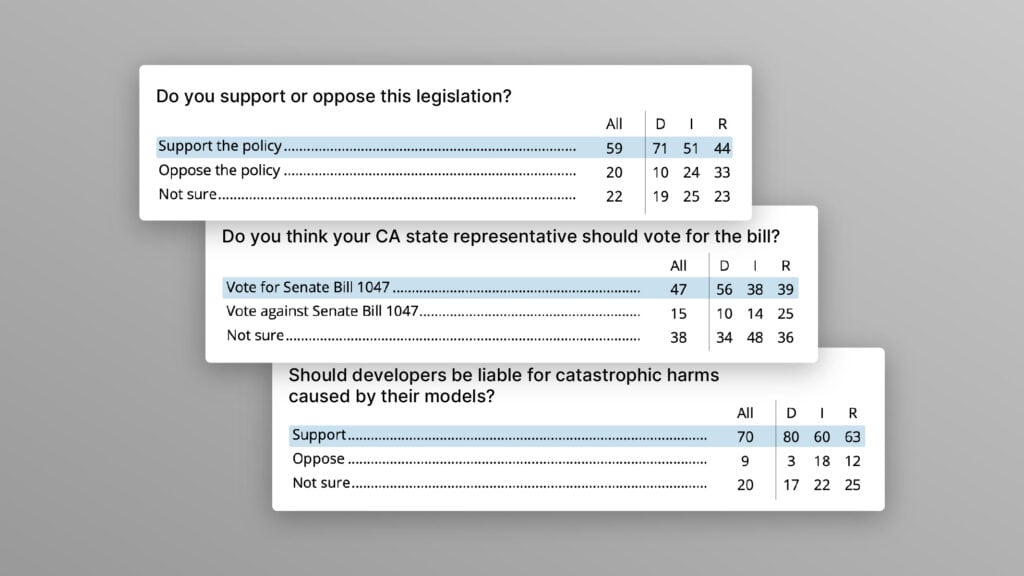
Poll Shows Broad Popularity of CA SB1047 to Regulate AI
